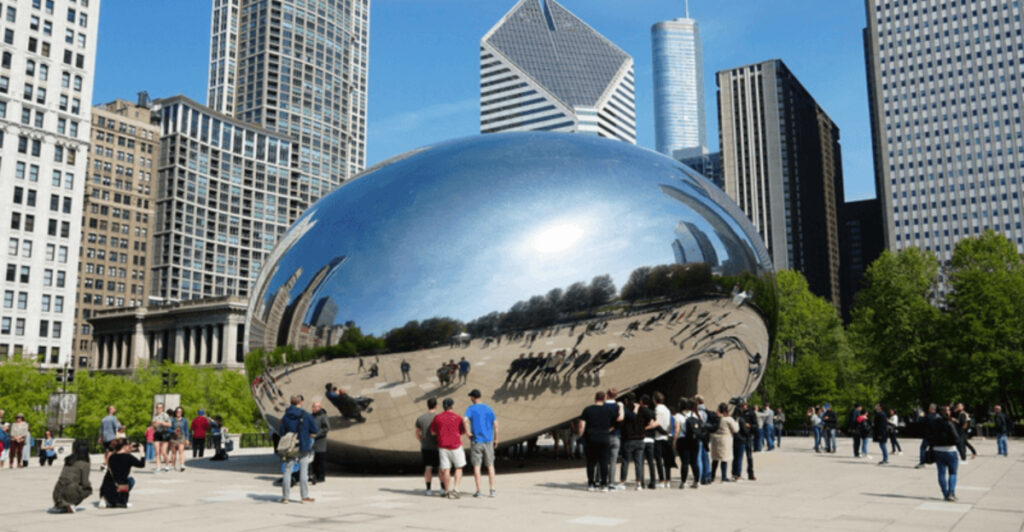Planning a trip across America? While guidebooks highlight famous landmarks, locals often cringe at the mention of certain overcrowded spots. These tourist traps promise authentic experiences but deliver long lines, inflated prices, and manufactured charm instead. Before finalizing your itinerary, consider this insider advice about places that might not be worth your precious vacation time.
1. Times Square, New York City (NY)
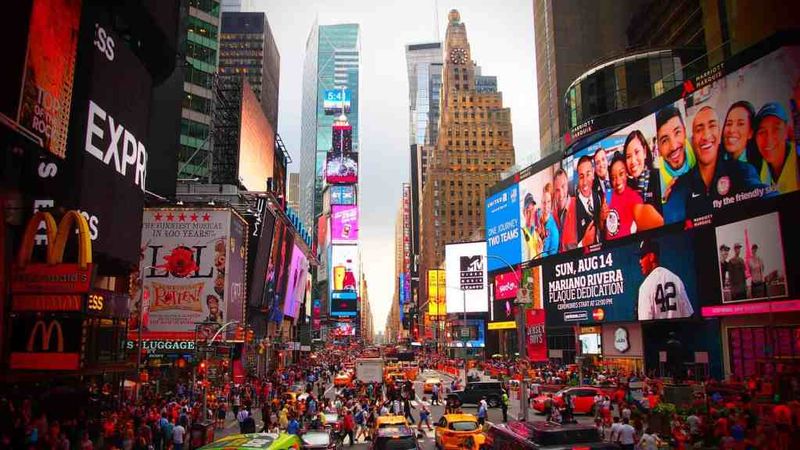
Blinding billboards and elbow-to-elbow crowds make this iconic intersection more headache than highlight. The dirty sidewalks teem with costumed characters aggressively demanding tips for photos, while chain restaurants charge triple their normal prices for mediocre meals. Street vendors hawk knockoff merchandise as you struggle to move through the human congestion. Even the famous New Year’s ball drop spot feels disappointingly smaller in person than on television. New Yorkers recommend Greenwich Village for authentic city vibes, where tree-lined streets house quirky shops and cozy cafes. Central Park offers breathing room with scenic walking paths, charming bridges, and seasonal activities that showcase the city’s true character without the sensory overload.
2. Hollywood Walk of Fame, Los Angeles (CA)
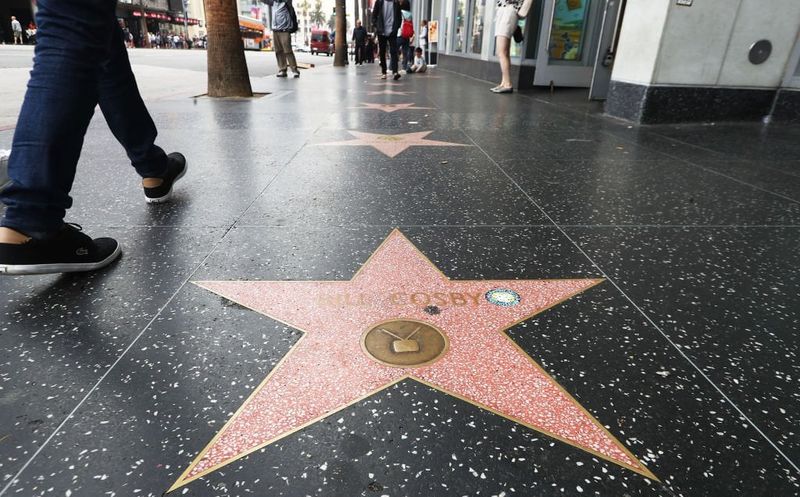
Those famous sidewalk stars seem glamorous in movies but prove utterly underwhelming in reality. Stretching along grimy Hollywood Boulevard, this tourist magnet attracts aggressive street performers, celebrity impersonators demanding cash for photos, and persistent vendors selling overpriced souvenirs. The surrounding area feels run-down and potentially unsafe, especially after dark. Many visitors express shock at how different the actual location feels from its portrayal in media. For genuine Hollywood magic, locals suggest the Griffith Observatory with its sweeping city views and planetarium shows. Studio tours at Warner Bros. or Universal provide authentic behind-the-scenes glimpses into filmmaking that the Walk of Fame simply can’t deliver, complete with actual movie sets and production insights.
3. Fisherman’s Wharf / Pier 39, San Francisco (CA)
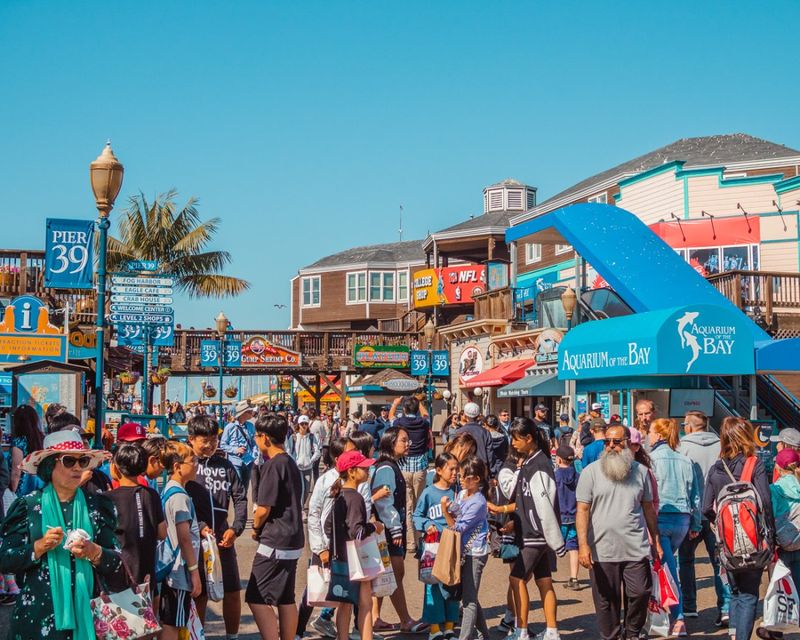
Once a working fishing hub, this waterfront district has transformed into a commercialized carnival of chain restaurants and cookie-cutter gift shops. Street performers compete for attention while vendors hawk identical San Francisco-branded merchandise at inflated prices. The famous sea lions lounging on docks are indeed charming, but viewing them means battling through dense crowds. Food stands charge premium rates for mediocre clam chowder in sourdough bread bowls that rarely match the hype. San Francisco natives recommend Fort Mason or Crissy Field for spectacular bay views without the tourist circus. These locations offer similar vistas of Alcatraz and the Golden Gate Bridge, plus peaceful walking paths where you can actually hear the waves instead of hawkers. Local seafood tastes better and costs less at neighborhood spots in North Beach.
4. The Las Vegas Strip, Las Vegas (NV)
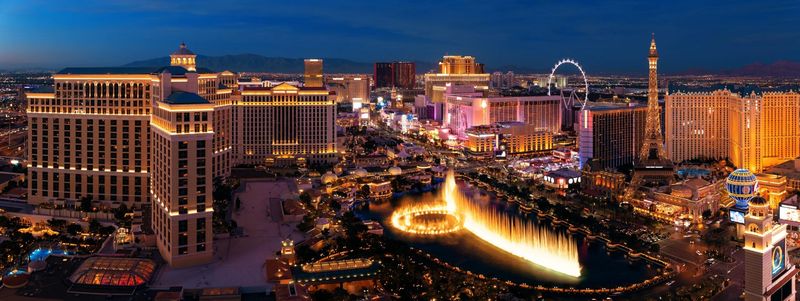
Behind the dazzling neon and fountain shows lies a pedestrian nightmare of inflated prices and artificial experiences. Walking the Strip sounds easy until you encounter deceptively long distances between casinos, aggressive timeshare salespeople, and crowds that make simple navigation exhausting. Drinks cost triple what they should, while casino restaurants serve mediocre food at celebrity chef prices. The manufactured excitement feels increasingly generic as corporate ownership homogenizes the once-unique properties. Vegas residents prefer Downtown’s Fremont Street for its more reasonable prices and authentic old Vegas charm. The Neon Museum showcases the city’s fascinating history through preserved signs. For natural beauty, Red Rock Canyon offers stunning desert landscapes just 30 minutes from the Strip – a peaceful alternative where admission costs less than a single Strip cocktail.
5. Mount Rushmore, South Dakota
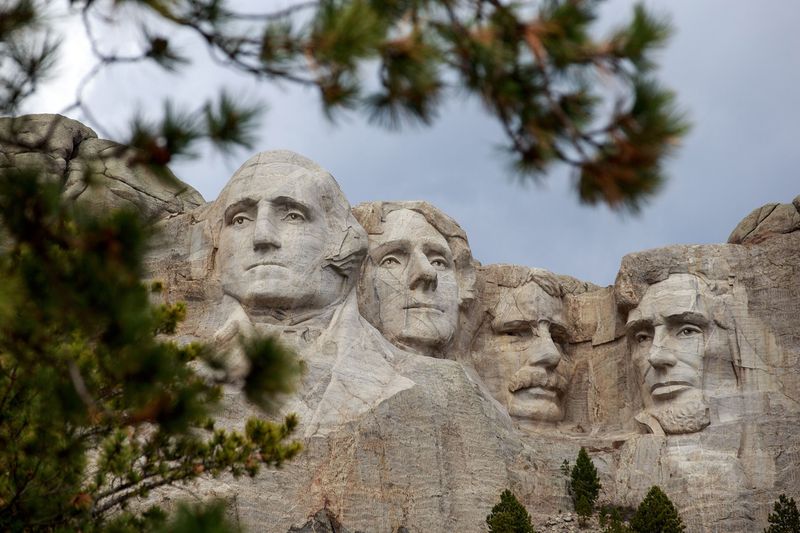
The presidential faces carved into granite seem much smaller in person than photographs suggest. After driving hours through South Dakota’s remote landscape, many visitors express disappointment at the brief viewing experience that lacks interactive elements. The surrounding complex feels overly commercialized with gift shops selling identical souvenirs. Parking fees, entrance costs, and overpriced concessions add up quickly for what amounts to a 30-minute stop at the viewing platform. Local South Dakotans recommend the scenic Needles Highway drive through spectacular rock formations and tunnels carved into mountains. The nearby Crazy Horse Memorial, though perpetually under construction, offers more cultural context and educational value about Native American history. Both alternatives provide more meaningful experiences than the quick photo op at Rushmore.
6. Wall Drug, South Dakota
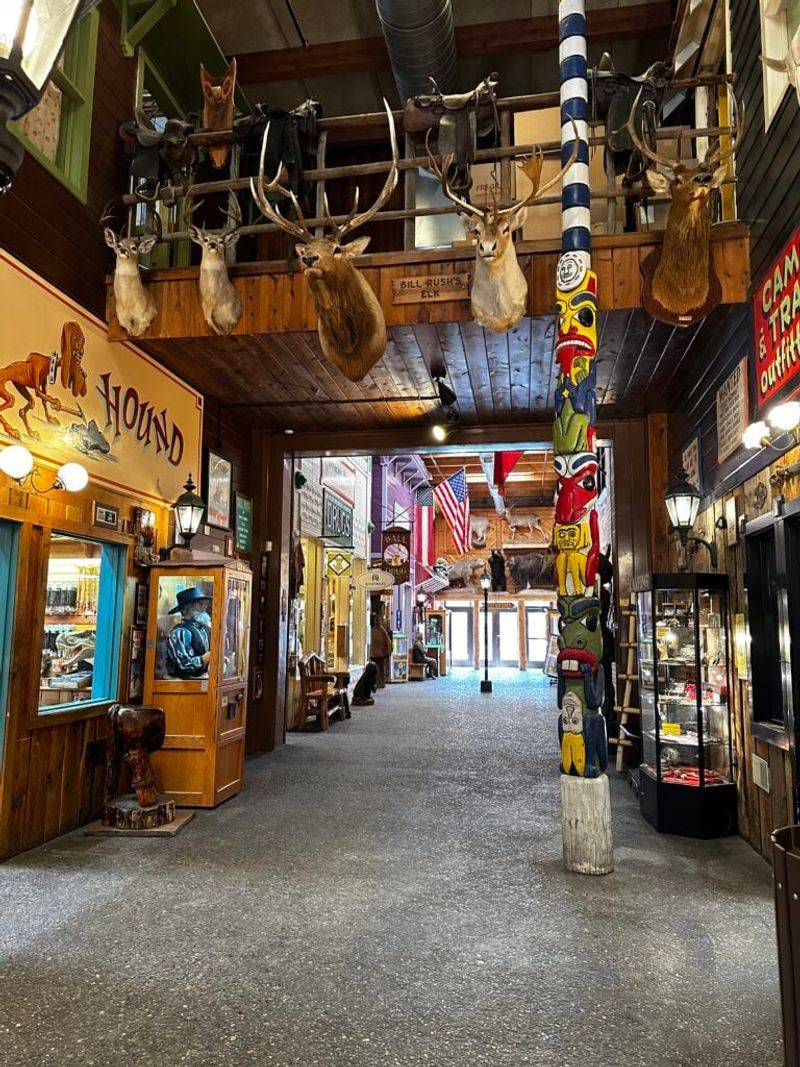
Hundreds of roadside billboards create outsized expectations for this sprawling tourist trap. What began as a simple drugstore offering free ice water to travelers has morphed into a kitschy labyrinth of mediocre attractions and tacky souvenir stands. The famous homemade donuts and 5-cent coffee can’t compensate for the overwhelming commercialization. Animatronic displays and dated photo opportunities feel more desperate than charming, while the Western-themed décor borders on caricature rather than authentic frontier history. South Dakota offers genuinely breathtaking alternatives nearby. Badlands National Park presents otherworldly landscapes with hiking trails through colorful rock formations. Wind Cave National Park features one of the world’s longest cave systems with unique boxwork formations. Either option provides authentic natural wonders instead of manufactured roadside gimmicks.
7. The Alamo, San Antonio (TX)
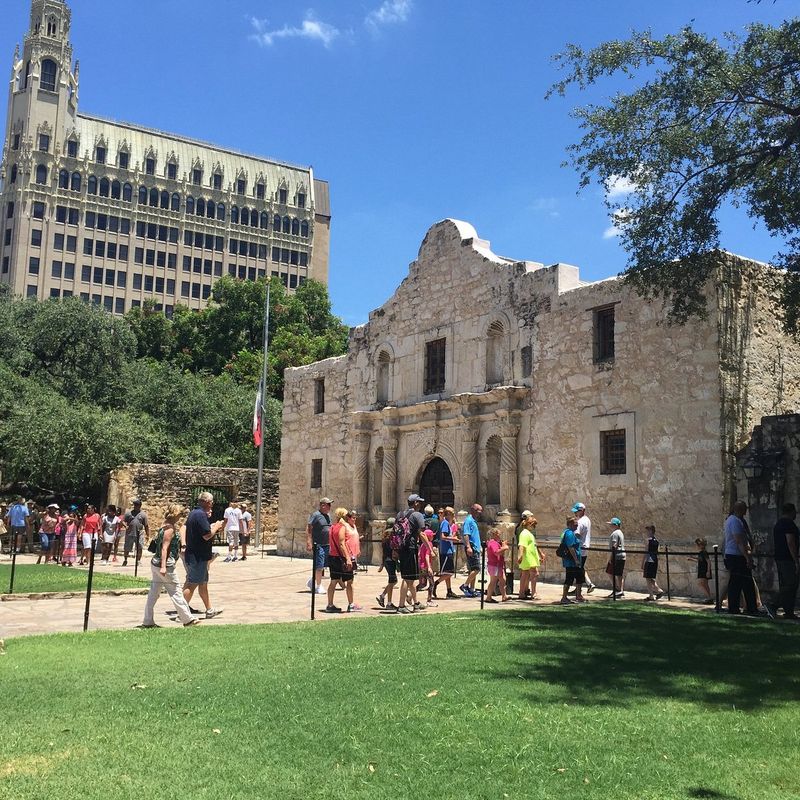
History buffs often leave this famous mission feeling shortchanged by its small size and limited exhibits. The modest limestone building sits incongruously surrounded by modern downtown San Antonio, with souvenir shops and fast-food restaurants diminishing any historical atmosphere. Inside, the sparse artifacts and basic informational displays fail to convey the site’s complex history. Lines frequently stretch around the block during peak seasons, yet most visitors complete their tour in under 20 minutes. San Antonio locals direct history enthusiasts to the San Antonio Missions National Historical Park instead. This UNESCO World Heritage site preserves four additional Spanish colonial missions along a nine-mile trail. These less-visited missions offer more authentic architecture, peaceful grounds, and comprehensive historical context without the commercial circus surrounding the Alamo.
8. Four Corners Monument (AZ/CO/NM/UT)
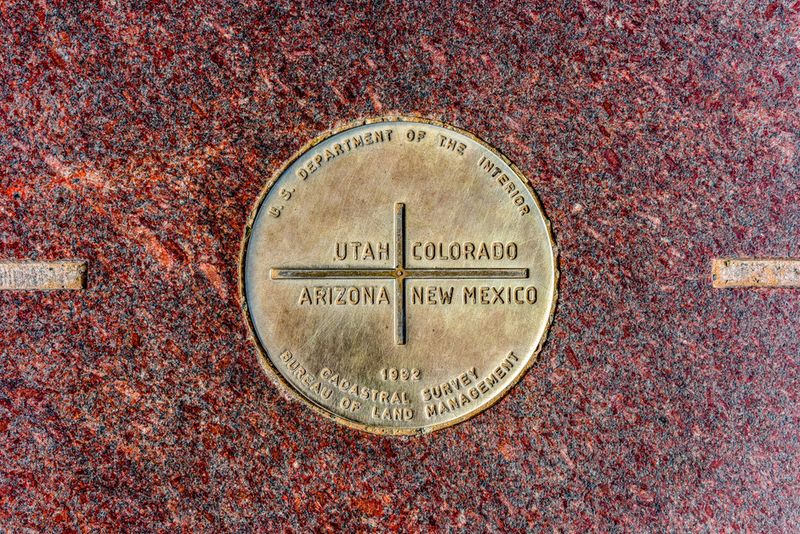
Remote desert roads lead to this simple concrete marker where four states theoretically meet. After potentially hours of driving through sparse landscape, visitors find a plain medallion embedded in the ground surrounded by vendor booths selling crafts. The reality feels anticlimactic – waiting in line for a quick photo standing in four states simultaneously, then wondering what to do next. The monument sits on Navajo Nation land and charges an entrance fee that seems steep for the limited experience offered. The surrounding Four Corners region contains spectacular alternatives worth your time. Mesa Verde National Park showcases ancient cliff dwellings, while Monument Valley presents iconic sandstone buttes familiar from countless Western films. Natural Bridges National Monument offers stunning rock formations without crowds. Any of these destinations provides more rewarding experiences than the quick photo op at the concrete marker.
9. Pike Place Market, Seattle (WA)
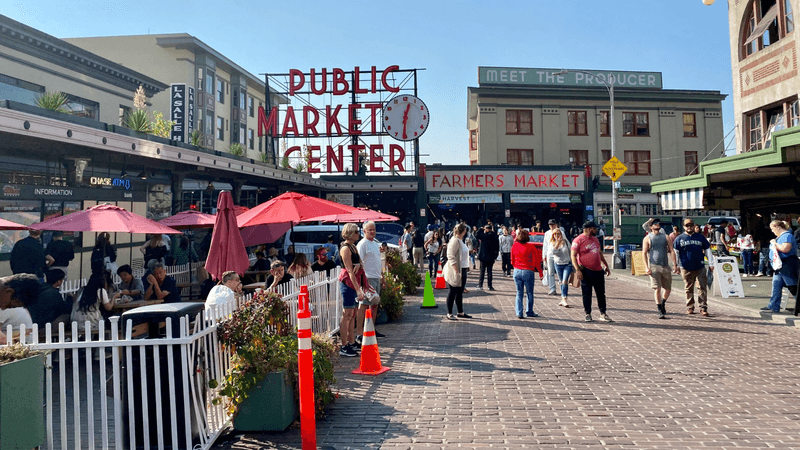
The famous fish-throwing spectacle draws hordes of camera-wielding tourists who block aisles and rarely purchase anything. Once a genuine local market, Pike Place now caters primarily to visitors with increasingly standardized offerings and inflated prices. Navigating the narrow corridors becomes a frustrating exercise in crowd management rather than a pleasant shopping experience. Many vendors sell identical tourist trinkets instead of unique local goods, while the original character gradually disappears beneath commercialization. Seattle residents prefer neighborhood farmers markets like Ballard or University District for actual grocery shopping and local flavor. Capitol Hill offers eclectic shops and restaurants with authentic Seattle character. For spectacular views without the crowds, Kerry Park provides the classic Seattle skyline panorama that appears on postcards, complete with Space Needle and Mount Rainier on clear days.
10. Navy Pier, Chicago (IL)
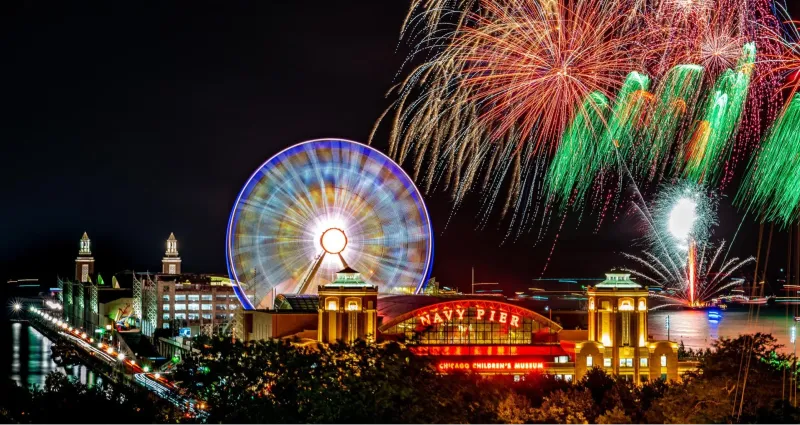
This lakefront attraction promises Chicago charm but delivers carnival rides and chain restaurants you could find anywhere. The generic shopping mall atmosphere feels disconnected from the city’s rich architectural and cultural heritage. Overpriced food courts serve mediocre meals while souvenir shops peddle identical Chicago-branded merchandise. The Ferris wheel and carousel charge premium prices for brief rides, creating an experience more suited to a traveling fair than a distinctive city landmark. Chicago locals recommend Millennium Park for iconic city experiences like Cloud Gate (the Bean) and free cultural events. The Museum Campus houses world-class institutions including the Field Museum and Shedd Aquarium. For authentic Chicago flavor, neighborhoods like Wicker Park and Logan Square offer distinctive shops, restaurants, and architecture that showcase the city’s true character without the tourist markup.
11. Cannery Row, Monterey (CA)
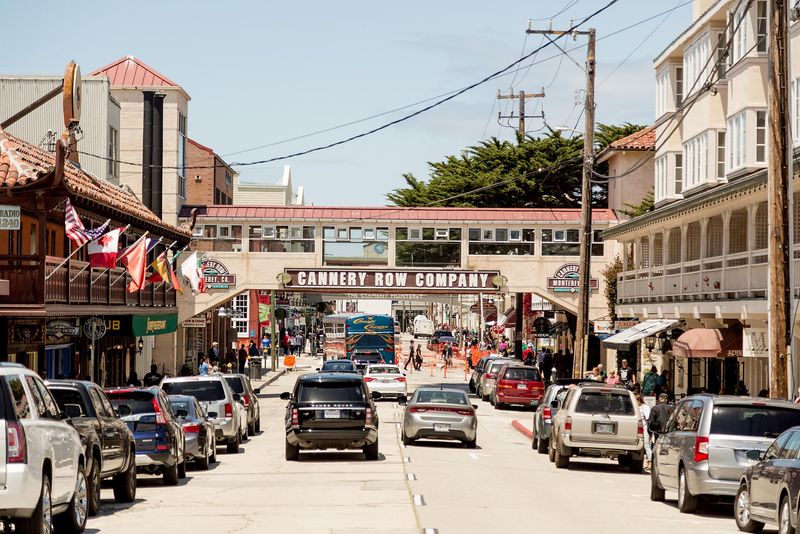
John Steinbeck would barely recognize this once-gritty industrial area now transformed into a glossy shopping district. The historic canneries that inspired his famous novel have been replaced by chain stores and overpriced seafood restaurants with minimal connection to the area’s fascinating past. T-shirt shops and candy stores dominate storefronts where sardine workers once toiled. Parking proves both scarce and expensive, while restaurants charge premium prices for ocean views rather than exceptional cuisine. Monterey residents suggest exploring the rocky shoreline at Asilomar State Beach, where tide pools reveal fascinating marine creatures without admission fees. The scenic 17-Mile Drive through Pebble Beach offers spectacular coastal vistas, dramatic cypress trees, and wildlife viewing opportunities. Point Lobos State Natural Reserve provides hiking trails through pristine landscapes with better wildlife spotting than the commercial aquarium.
12. Bourbon Street, New Orleans (LA)
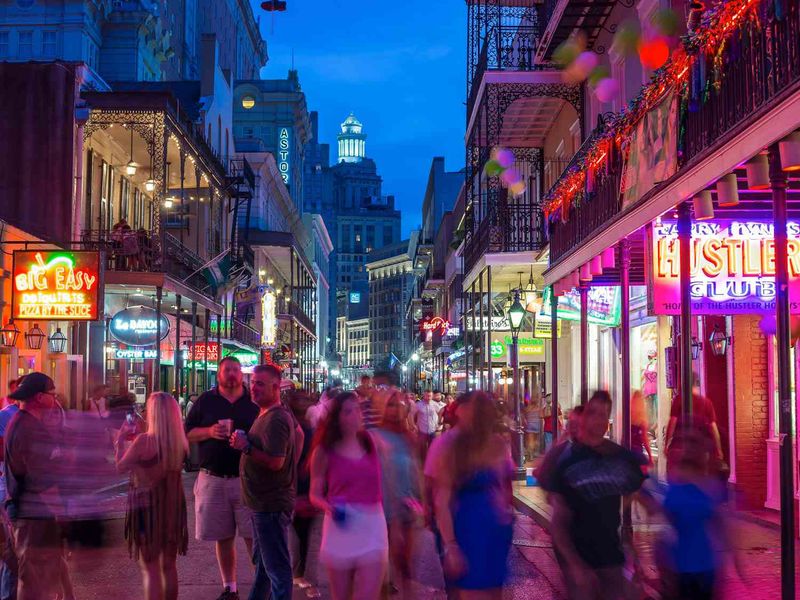
The notorious party strip has devolved into a caricature of authentic New Orleans culture. Sticky floors, overpriced hurricane cocktails, and rowdy bachelor parties create an atmosphere more reminiscent of a college spring break than the sophisticated city known for its unique blend of cultures. Pushy bar hawkers compete for attention while blasting competing music from neighboring establishments creates cacophony rather than melody. The street’s distinctive aroma combines spilled drinks, cleaning chemicals, and worse – especially during summer months when heat intensifies every smell. New Orleans locals direct visitors to Frenchmen Street for authentic live jazz without the excessive crowds. The Garden District offers peaceful strolls past magnificent historic homes and Lafayette Cemetery No. 1. For genuine Creole cuisine at reasonable prices, neighborhood restaurants in Tremé or Mid-City serve flavorful dishes without tourist markups.
13. South of the Border, South Carolina
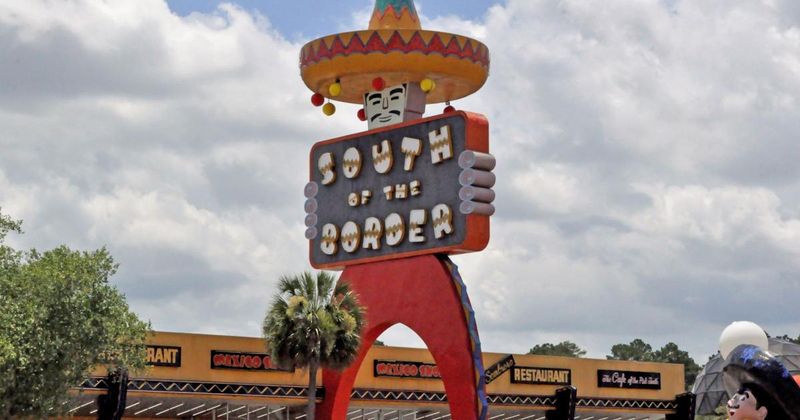
Hundreds of garish billboards featuring ‘Pedro’ promise roadside excitement that never materializes at this dated Mexican-themed rest stop. What began as a simple beer stand in the 1950s has sprawled into a collection of tacky gift shops, mediocre restaurants, and faded attractions straddling the North Carolina-South Carolina border. The sombrero-shaped observation tower and mini-golf course show their age through peeling paint and minimal maintenance. Bathrooms often fall short of cleanliness standards, while the restaurants serve Americanized versions of Mexican food that disappoint even undiscriminating palates. Savvy travelers continue south to Charleston’s historic district with its cobblestone streets and distinctive architecture. The coastal communities of Beaufort and Hilton Head offer Southern charm and natural beauty without the roadside kitsch. Even small towns like Camden and Georgetown provide authentic glimpses into South Carolina culture that South of the Border fails to deliver.
14. Plymouth Rock, Massachusetts
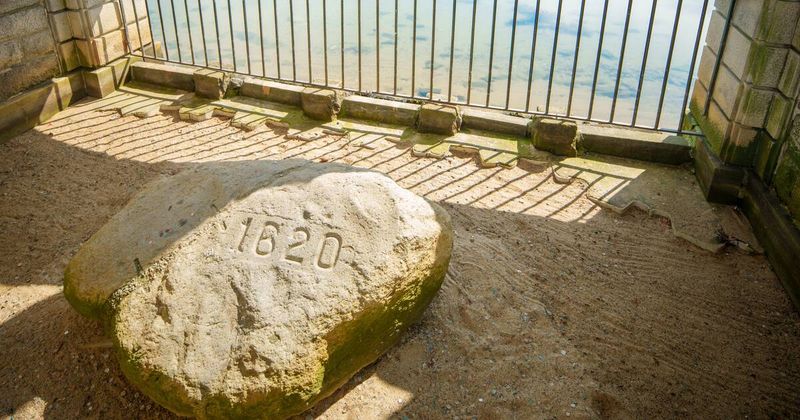
America’s origin story begins with an underwhelming stone. The famous rock where Pilgrims supposedly first stepped onto American soil sits unceremoniously in a small shore-side pavilion, protected by columns and appearing much smaller than most visitors expect. The modest granite boulder, roughly the size of a coffee table, often prompts confused reactions like “That’s it?” after travelers make special journeys to see it. The surrounding area offers limited historical context, with more focus on gift shops than educational experiences. Massachusetts offers far more rewarding historical sites nearby. Boston’s Freedom Trail connects 16 significant Revolutionary War locations through a walkable urban route. Plimoth Patuxet Museums (formerly Plantation) recreates 17th-century colonial and Native American settlements with interactive exhibits and costumed interpreters. Both alternatives provide deeper historical immersion than the quick glimpse at a rather ordinary rock.
15. Waikiki Beach, Honolulu (HI)
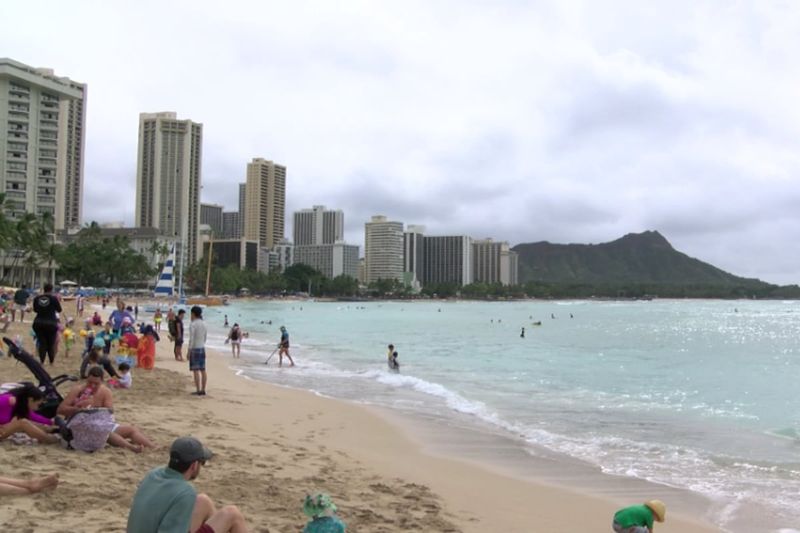
Postcard images show pristine sands and swaying palms, but reality reveals a narrow, crowded strip where finding open beach space feels like winning the lottery. High-rise hotels create afternoon shadows across the beach while blocking the famous Hawaiian mountain views. Overpriced restaurants serve mediocre food with oceanfront surcharges, and beach activities come with premium tourist pricing. The artificial beach requires constant sand replenishment as erosion continually shrinks the shoreline, creating a less-than-natural experience. Hawaiian locals escape to Lanikai Beach on Oahu’s windward side for genuinely turquoise waters and powdery white sand without the crowds. The North Shore offers spectacular waves and authentic surf culture during winter months. Kailua Beach Park provides ample parking, picnic facilities, and water sports rentals at reasonable prices – plus enough space to spread out without touching neighboring beach towels.
16. Space Needle, Seattle (WA)
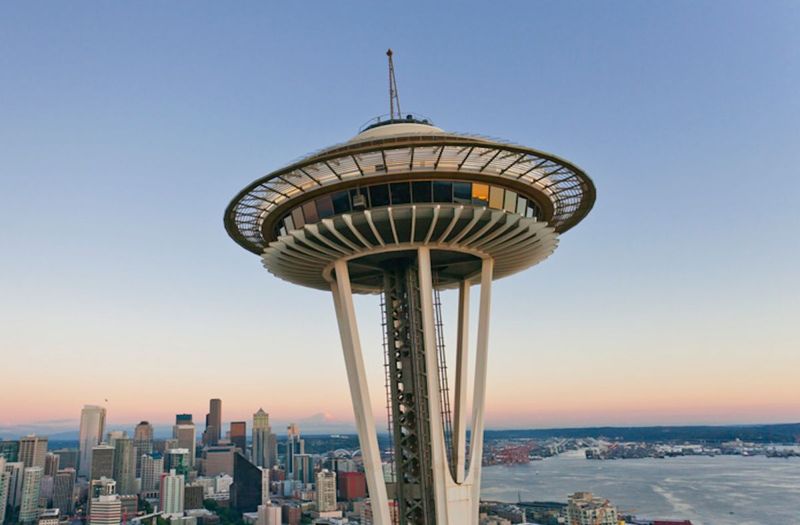
Seattle’s retro-futuristic icon charges premium prices for an observation experience that lasts typically less than 30 minutes. Timed entry tickets often mean waiting regardless of weather conditions, while foggy days can eliminate views entirely without refund options. The rotating restaurant serves overpriced meals that rarely match the quality available at Seattle’s renowned dining establishments. Gift shop prices reflect the captive audience rather than reasonable value, and the surrounding Seattle Center area lacks authentic local character. Seattle residents prefer rooftop bars like The Nest or Smith Tower for comparable views with craft cocktails instead of admission fees. Kerry Park on Queen Anne Hill offers the classic Seattle skyline photograph opportunity – including the Space Needle itself – completely free. Columbia Center’s Sky View Observatory provides higher elevation and 360-degree views at lower prices than its more famous competitor.
17. International UFO Museum, Roswell (NM)
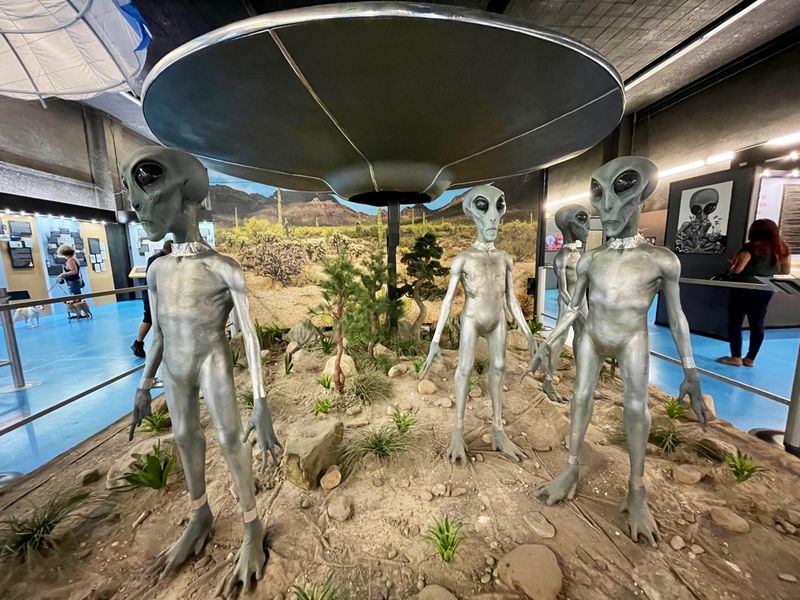
Conspiracy theorists flock to this former movie theater housing a modest collection of newspaper clippings, photographs, and alien-themed displays. Despite the fascinating subject matter, the museum relies heavily on text panels rather than interactive exhibits, creating a static experience that feels stuck in the 1990s. Many displays feature questionable evidence presented without scientific context or alternative explanations. The gift shop often receives more attention than the museum itself, with alien-themed merchandise dominating the small New Mexico town’s souvenir market. New Mexico offers genuinely otherworldly landscapes worth exploring instead. White Sands National Park presents surreal gypsum dunes stretching for miles, creating an alien-like landscape more impressive than any museum display. Carlsbad Caverns National Park features spectacular underground chambers with natural formations that seem genuinely extraterrestrial. Both natural wonders provide memorable experiences beyond the kitschy UFO tourism of Roswell.
18. The Bean (Cloud Gate), Chicago (IL)
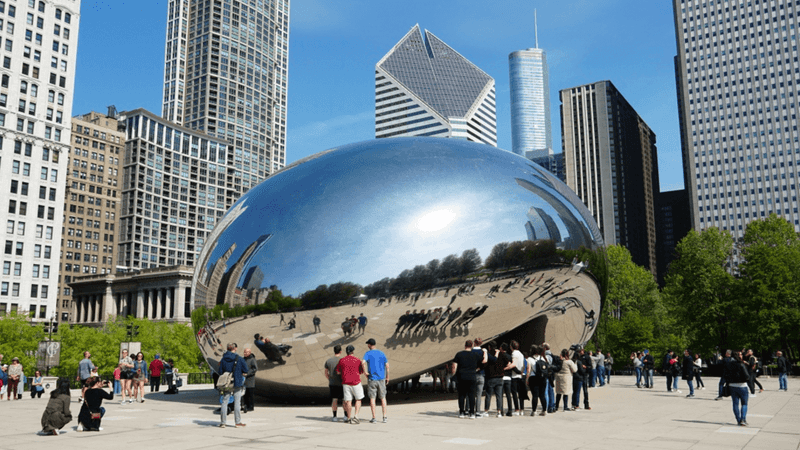
Anish Kapoor’s reflective sculpture creates the perfect Instagram backdrop – which explains the perpetual crowds surrounding it. Visiting this mirrored bean-shaped artwork means navigating through selfie-takers and waiting for brief moments when enough people move to capture a decent photo. The surrounding Millennium Park offers limited seating, shade, or amenities compared to the number of visitors it receives daily. During summer months, the metal sculpture becomes uncomfortably hot to touch, while winter brings freezing temperatures that make lingering unpleasant. Chicago’s art scene extends far beyond this single sculpture. The city’s vibrant neighborhood murals in Pilsen and Logan Square offer colorful backdrops without the crowds. Architecture river cruises provide fascinating insights into the city’s famous skyline and building innovations. The Art Institute houses world-class collections spanning centuries, while Garfield Park Conservatory offers botanical beauty regardless of Chicago’s notoriously unpredictable weather.
19. Magnolia Plantation, Charleston (SC)

This historic plantation markets itself as a garden showcase, but many visitors note the commercialized atmosphere and superficial treatment of its complex history. Tour buses disgorge hundreds of tourists daily, creating congested pathways through gardens that require constant maintenance to maintain their manicured appearance. Admission prices continue climbing while the experience becomes increasingly standardized. Gift shops and concession stands now occupy buildings once central to plantation operations, creating a theme-park feel rather than historical immersion. Charleston locals recommend less-visited plantations like McLeod or Middleton Place for more authentic experiences with smaller crowds. The Angel Oak on Johns Island offers a genuinely awe-inspiring natural attraction – a massive live oak tree estimated at 400-500 years old with branches spanning 187 feet. Charleston’s historic district provides architectural beauty and Southern charm through self-guided walking tours without admission fees.
20. Mall of America, Bloomington (MN)
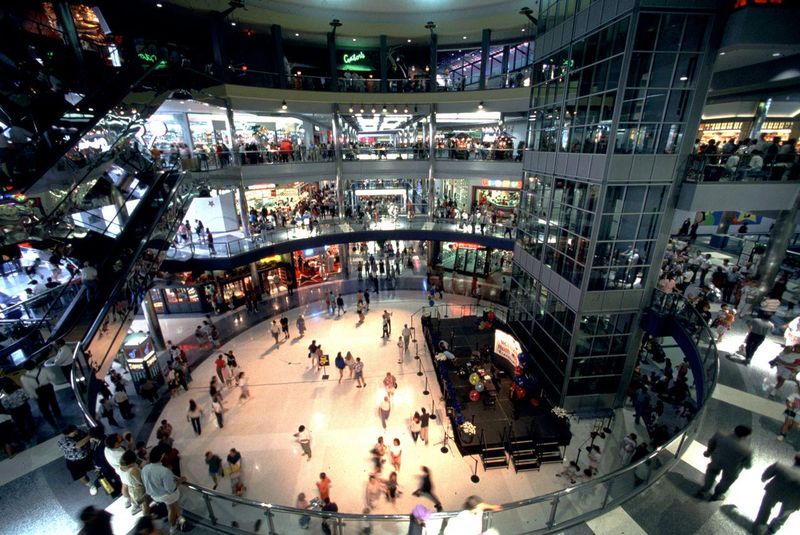
America’s largest shopping center promises retail paradise but delivers mostly chain stores found in any suburban mall nationwide. The indoor amusement park and aquarium charge separate premium admissions, creating unexpected additional expenses for families who arrive thinking “it’s just a mall.” Navigating the massive complex proves exhausting even for dedicated shoppers. Food courts offer standard fast-food fare at inflated prices, while parking during peak seasons becomes a frustrating exercise in patience and walking distance calculations. Minneapolis-St. Paul residents suggest alternatives that showcase Minnesota’s unique character. The Minneapolis Institute of Art offers world-class collections with free general admission. Local boutiques along Grand Avenue in St. Paul provide distinctive shopping without the overwhelming scale. For family entertainment, Minnehaha Falls Park combines natural beauty with recreational opportunities, including a popular sea salt restaurant near the cascading waterfall.

